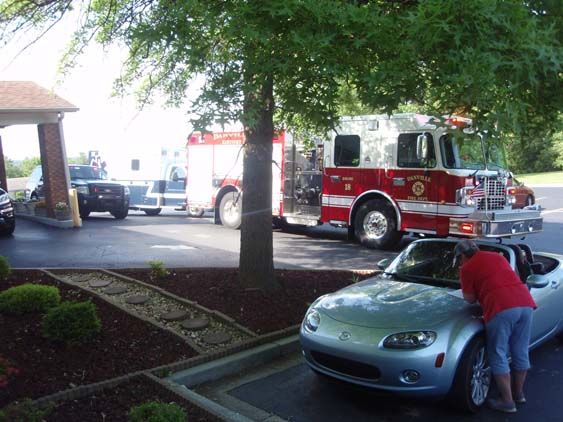Day 02
May 17
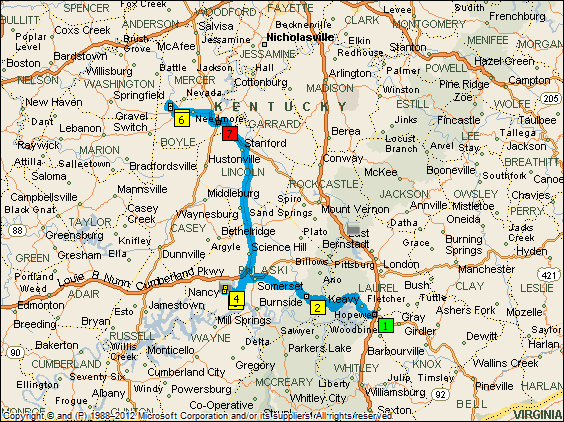
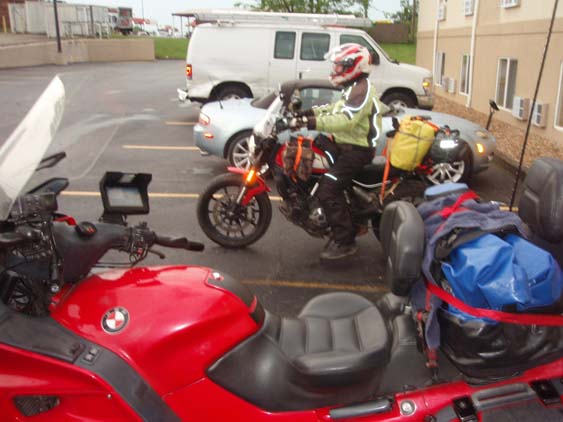
So off to the Cracked Barrel it is for some proper nourishment.
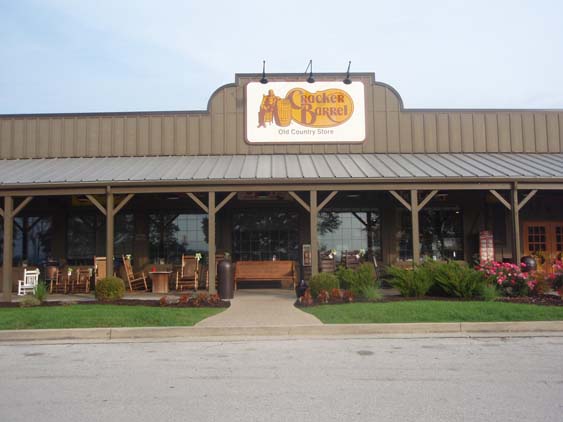
I decide that starting the day off with a nice cup of hot chocolate will be a good thing. Our server is more than happy to fix me up after she pours cups of starter fluid - also known as coffee - for Sissy and Andy.
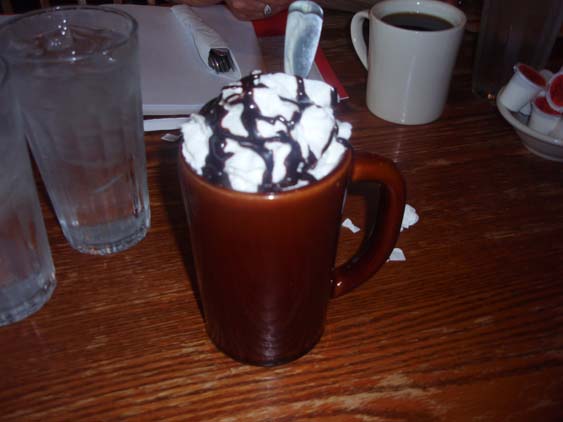
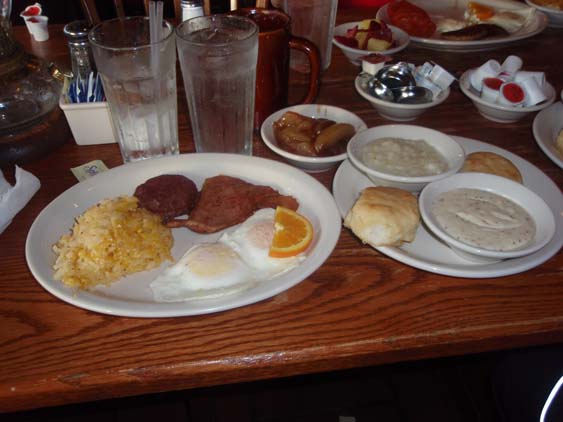
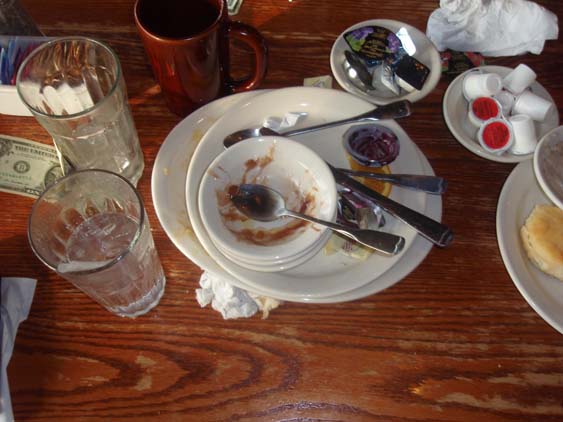
I have routed us along Kentucky 192 this morning to get to the Mill Springs Battlefield. I didn't know that it had a 'name' until I see this sign.
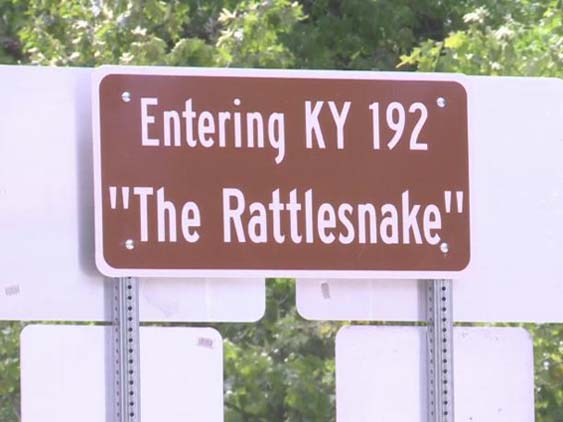
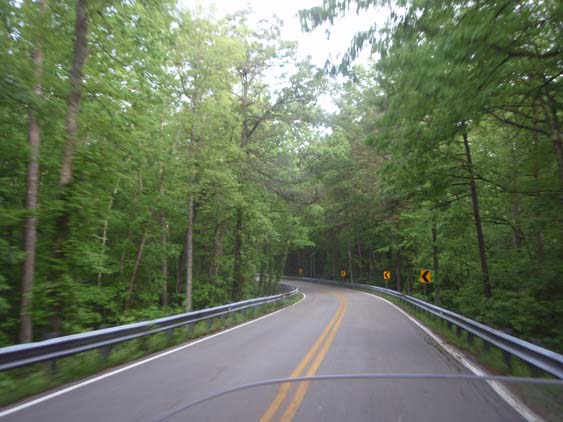
It has lots of elevation changes and sweet sweepers and very little traffic at this time of day.
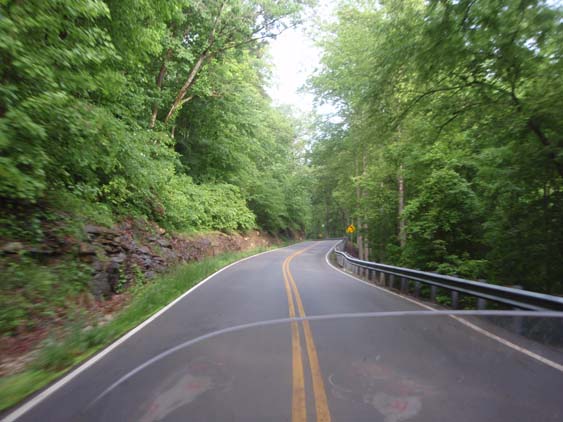
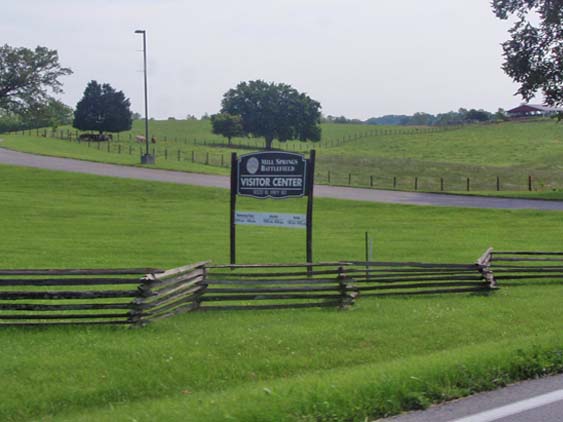
Our first stop is where one of the saddest tales of this particular battle occurred - all for the want of a pair of glasses -
After a lull in the battle, Union Col. Speed S. Fry rode a short distance to the right to get a better view of the Confederate movements. In the poor visibility of the dark woods, clouded with gunsmoke, confusion reigned. Confederate General Felix Zollicoffer, who was conspicuous in front of his men with a white raincoat, mistakenly approached the Union 4th Kentucky infantry, believing they were Confederates firing on their own men. Through the haze of the smoke-shrouded morning, Fry spotted him riding toward him from the trees. The near-sighted Zollicoffer (further hampered by the wet and smoky conditions) approached Fry, thinking he was a fellow Rebel, and warned him that his men had been firing on Southerners. Fry fled away when he saw another Rebel approaching to warn Zollicoffer that he was conferring with enemy troops. As he fled, he turned and fired his pistol. Zollicoffer fell lifeless to the ground. Soon after Fry realized to his elation that he had accomplished the rare feat of killing an enemy general. The spot where Zollicoffer was killed is today marked by the "Zollie Tree."
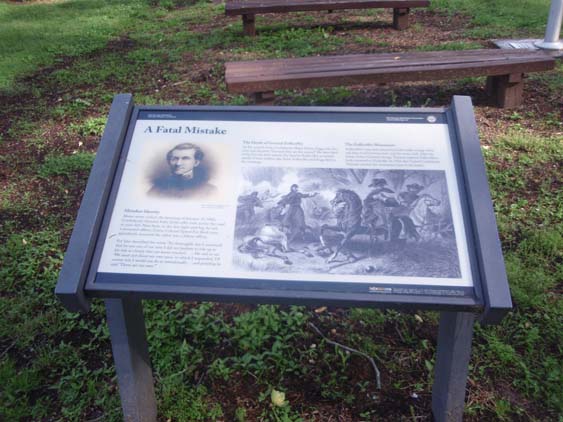
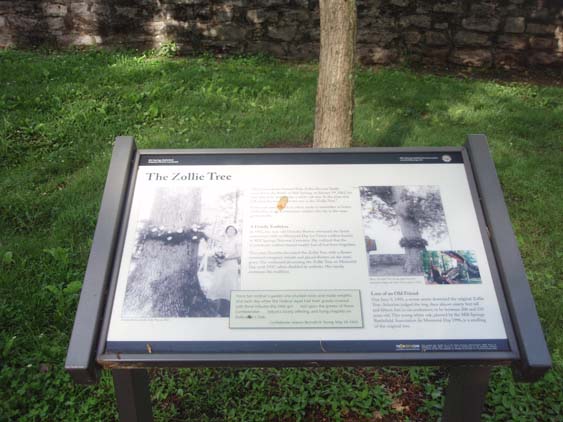
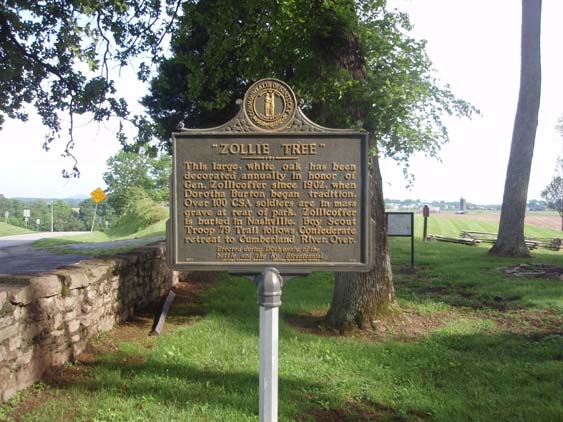
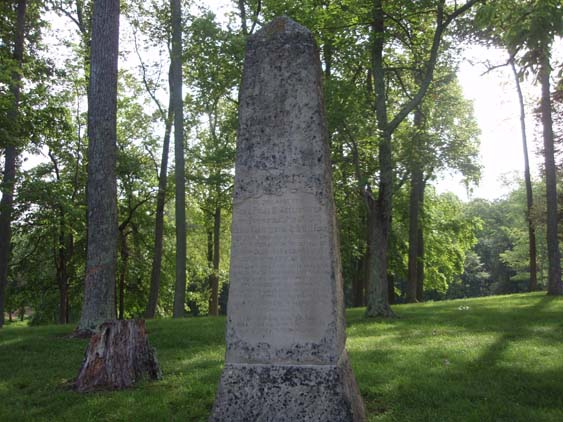
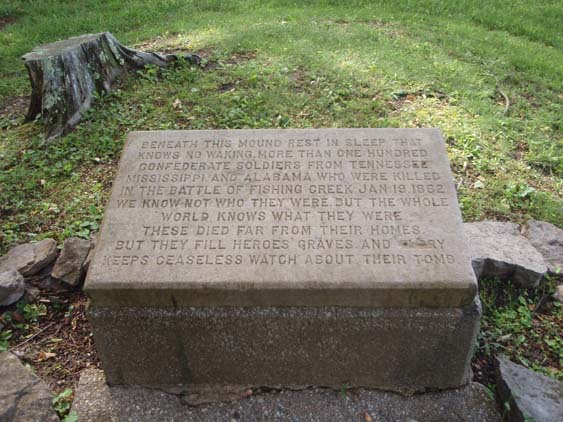
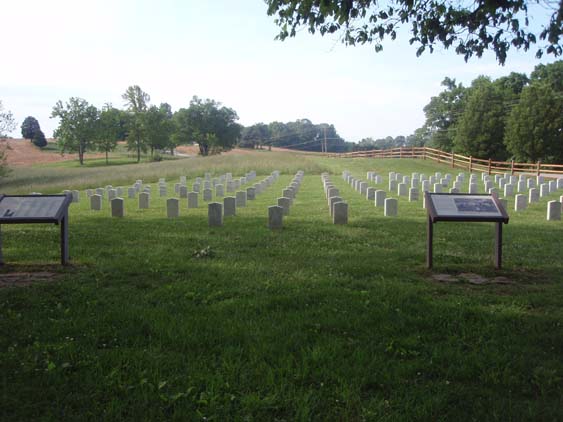
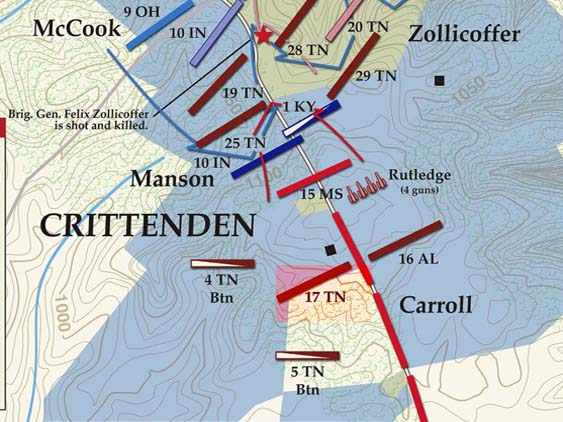
Their involvement is detailed in this battle excerpt -
The turning point occurred when the 2nd Minnesota attacked from the left while the 9th Ohio attacked from the right, and then suddenly changed direction and made a bayonet charge against the Rebels' left. The 9th Ohio Infantry, a German regiment from Cincinnati, charged the Confederates with fixed bayonets. The Confederate left crumbled under the Ohioans' bayonet charge, and the 15th Mississippi and 20th Tennessee were forced to retreat to keep from being surrounded. The courageous Lt. Bailie Peyton, Jr., commanding a company in the 20th Tennessee, was killed when he refused to retreat or surrender, but stood firing his pistol at the advancing enemy. The entire Union line advanced, forcing what was left of the Confederate army back to the top of the hill from which they had attacked. Here, the 16th Alabama and 17th and 29th Tennessee regiments opened a heavy fire on the Federals, momentarily halting their pursuit and allowing the front-line Confederate units to safely retreat. But for most of the Southern soldiers, their retreat turned into a rout. Many of the men simply turned and ran, throwing away their muskets and other implements of war in their haste to escape capture. Their courage and determination were simply not enough to overcome their fatigue from marching all night over muddy roads and fighting since dawn, their despair when their outmoded flintlocks refused to fire in the rain, and the confusion and lack of decisive leadership at their command level. After some three or four hours of hard fighting on a dark, rainy morning, the battle was over.
This site is known as the 'Last Stand Hill'.
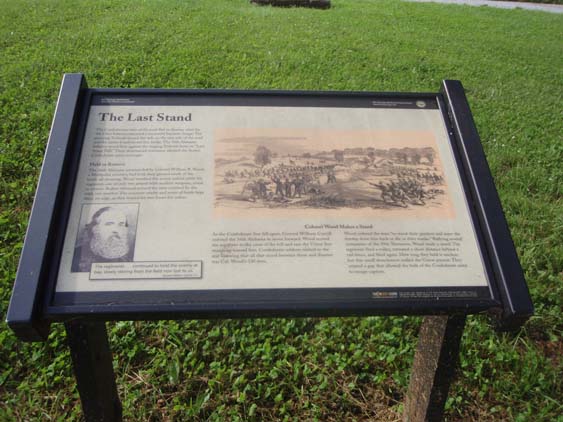
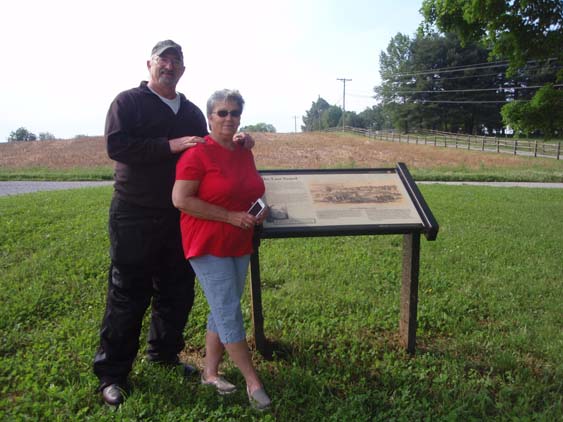
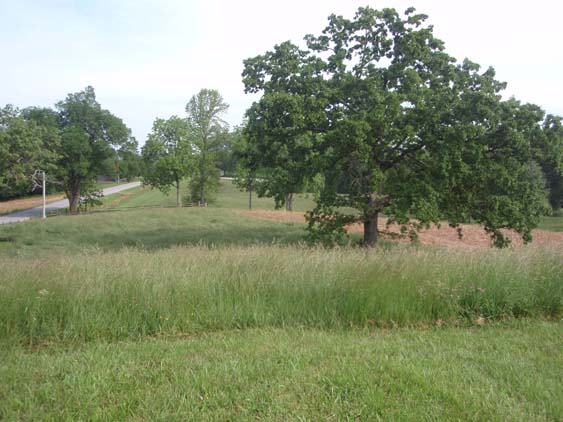
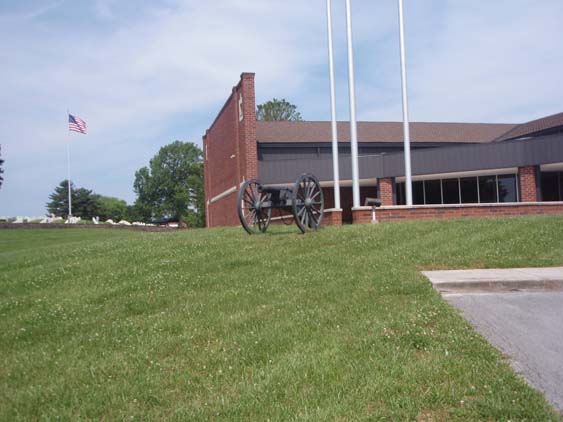
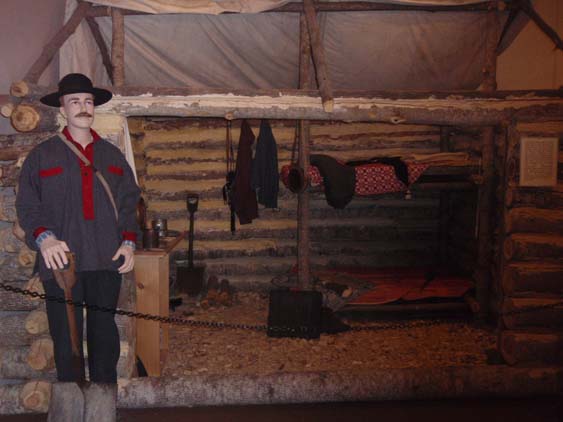
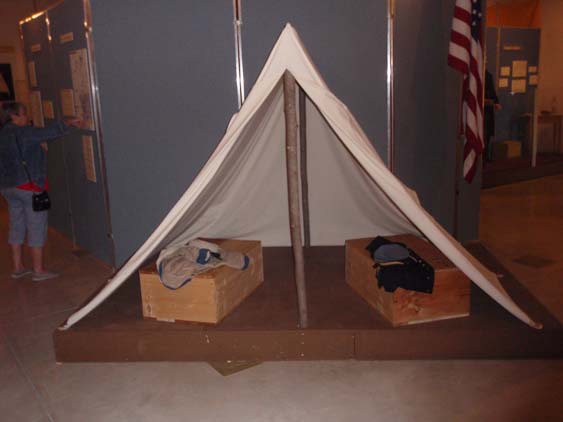
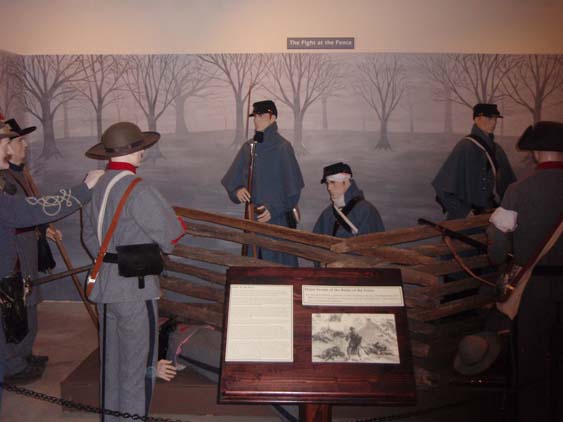
They have several displays of weapons that were used in the battle. What draws my attention to this display case is the rifle in the middle. It was found on the battlefield in the 1990s still loaded with ammunition. Evidently it would not fire and the soldier removed the firing plate and hid it on a nearby rock shelf.
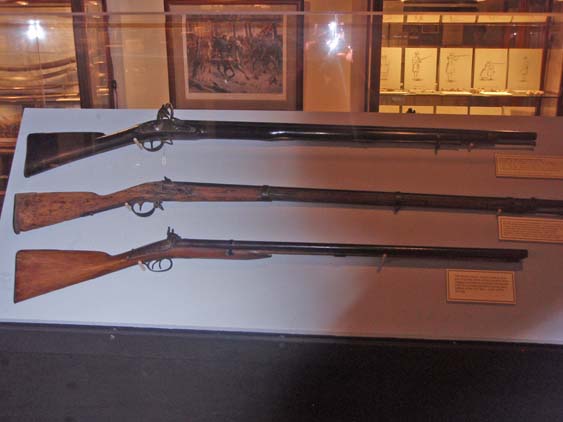
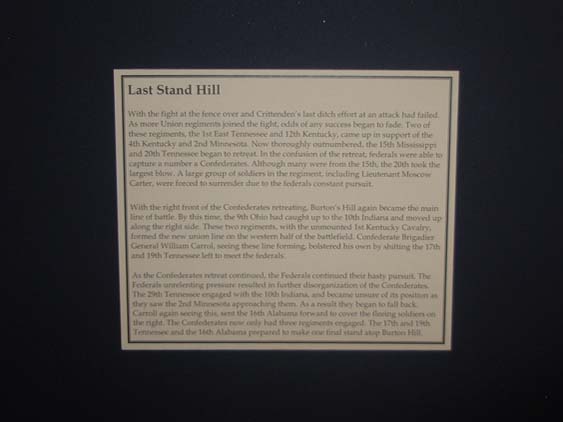
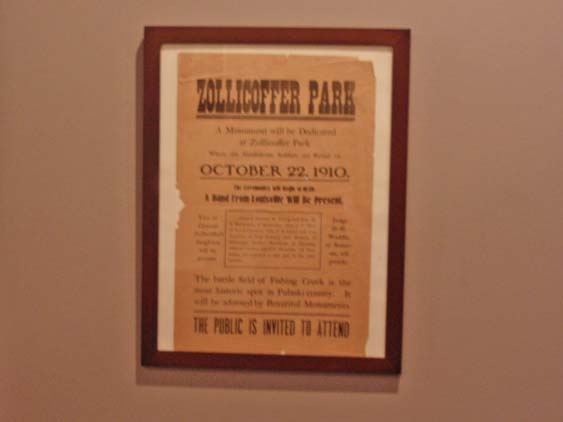
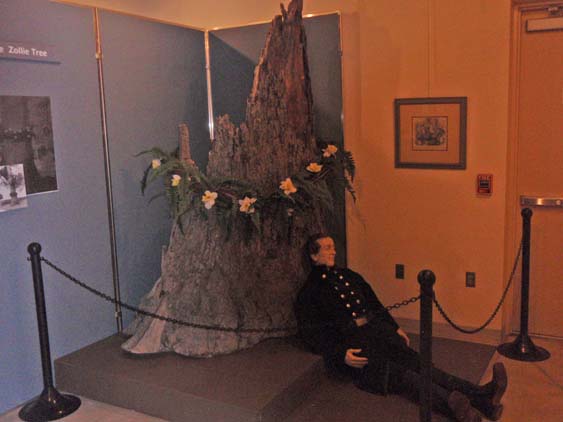
The town where the visitor's center is located is now call Nancy. The story is quite interesting -
Nancy is a Pulaski county community located on KY 80 about five miles west of Somerset. The locale was originally known as Logans Crossroads. The post office opened in 1884 with Mrs. Nancy Logan as the postmaster, the wife of Mr. William Logan. The town became known as Nancy as a result.
Most of the battle that day took place on the property of Mr. Logan.
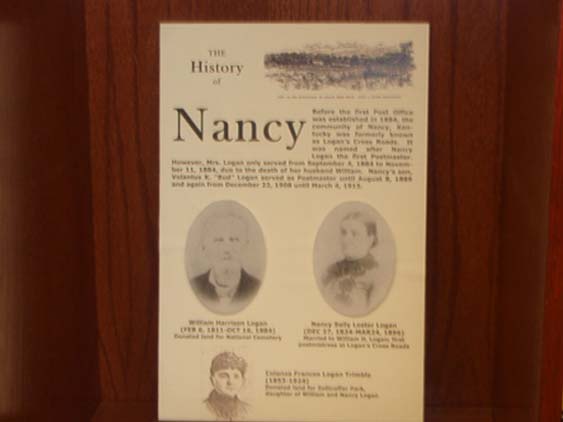
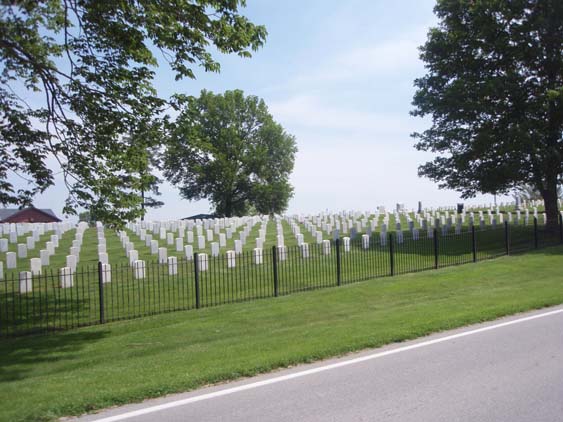
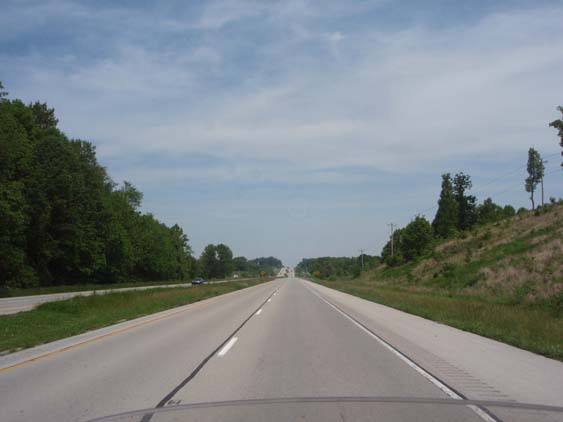
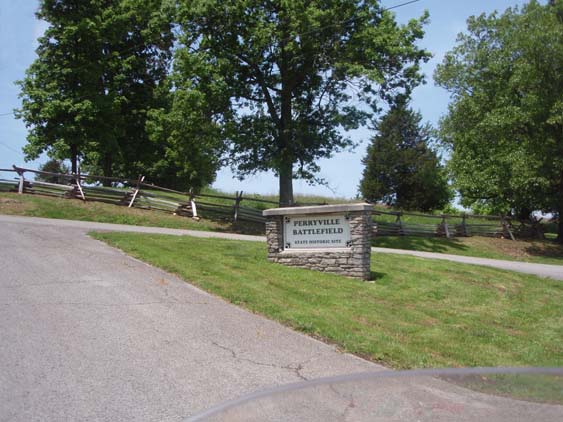
It's nice museum, well though out to give a great overview of the battle. They direct us to a small room where we watch a very good video that tells the story of the battle and surrounding events. One thing that we find very interesting is a quote from Abraham Lincoln -
I think to lose Kentucky
is nearly the same as to lose the whole game. Kentucky gone, we can not
hold Missouri, nor, as I think, Maryland. These all against us, and the
job on our hands is too large for us.
--September 22, 1861 Letter to Orville Browning
This begins to bring into focus so why so many of the early battles of the war were fought in the State of Kentucky. With the Ohio River forming her northern border, he who controlled Kentucky controlled that river and access to the Mississippi - the main highway for supplies and men who would fight the battles.
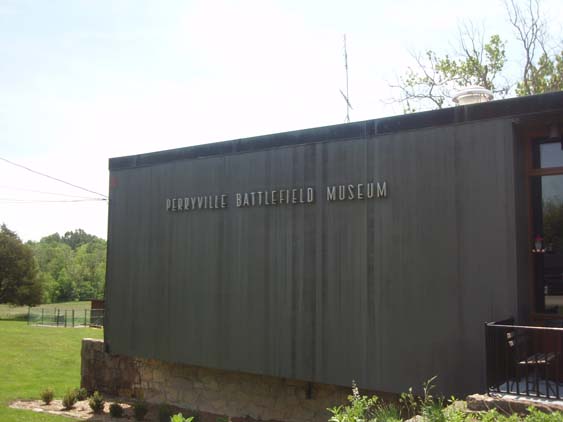
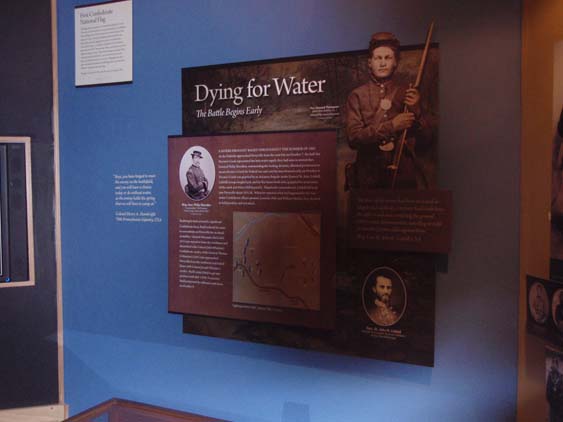
As was the case in many battles, the wounded often had limbs amputated due to the destruction of bone caused by the minie balls. Anesthesia was pretty much unavailable, so often the soldiers were given bullets to bite on while their limbs were being removed. These bullets have obvious teeth imprints in them and were used for that purpose. It is an interesting fact that more soldiers died from disease during the Civil War than from battles. Historians tell us that of the 750,000+ soldiers who died in that conflict, 500,000+ died from disease and improper medical care - a startling 2 out 3 ratio.
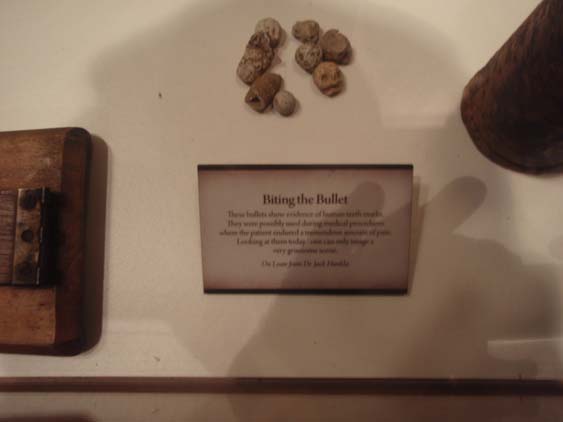
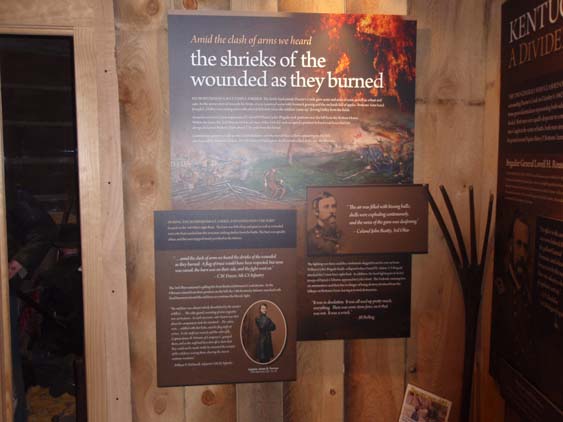
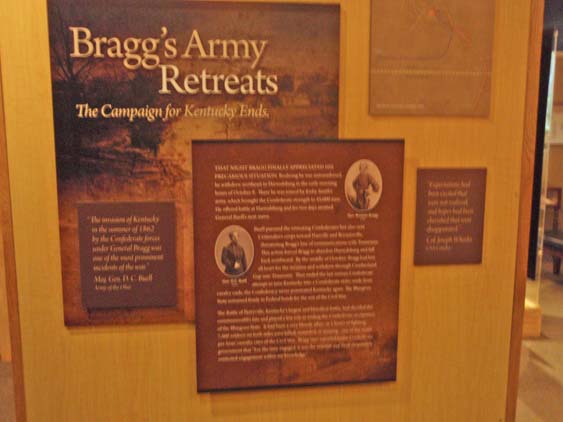
I ask the lady in the museum store -
"What's the quickest way to get to the Squire Bottom House. Can we walk there from here?"
She does not recommend us walking
and is a bit concerned about the shortest way there which is down a gravel
road since we are on motorcycles. We thank her for the information and
figure we'll see how bad the road is and make a decision at that fork.
The road turns out to be a little rough, but Andy and I make it just fine and Sissy has no trouble in her Miata. From this hilltop, which was a Union artillery posting, they would have seen the marching Confederates appear over the ridge directly in front of them.
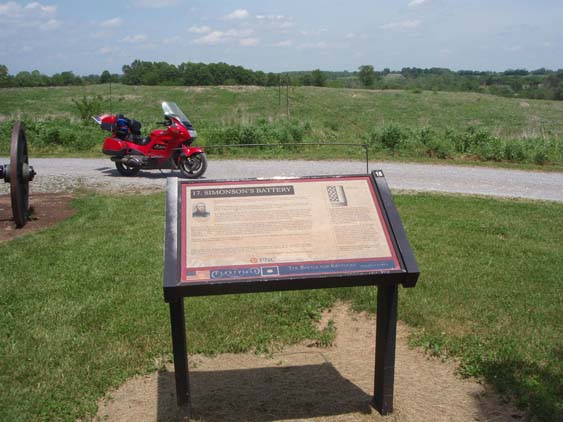
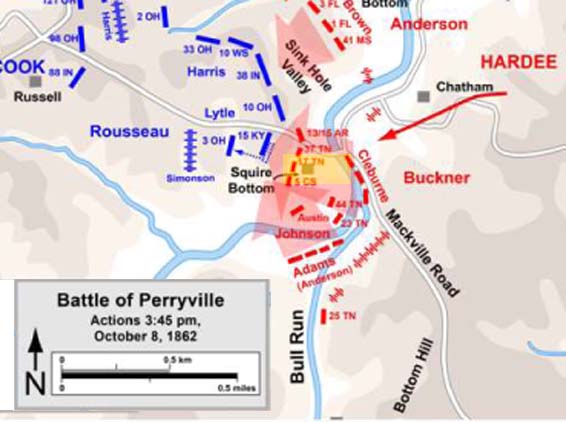
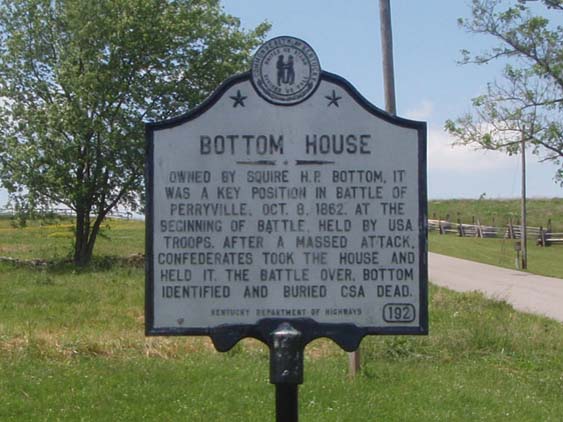
The story of the preservation of the house is quite interesting -
For those of you who
are not familiar with the Battle of Perryville and the role of the Bottom
House, Henry P. Bottom was a landed Squire of what is now Boyle County,
Kentucky. The majority of the furious fighting took place on his property.
Bottom was a slaveholder, and it was Henry and his slaves who, a few days
after the battle, buried the Confederate dead in two mass graves on what
is now the Perryville Battlefield State Park. His home was situated virtually
in the middle of some of the hardest fighting that took place on October
8, 1862. On the ridge above the house (facing west, down the Mackville
Road), rested the right flank of the First Corps of the Army of the Ohio,
commanded by Cincinnatian Major General Alexander McCook. The units present
on the ridge were commanded by Colonel William H. Lytle, another Cincinnatian,
and straddled the crest of the ridge above the house running to the North,
with the 10th Ohio and the 15th Kentucky on the far right, with the 3rd
Ohio, the 42nd and 38th Indiana to their left.
To the east and across the Doctor's Creek, and up the next hill was Major
General Simon B. Buckner's 3rd Division of the Confederate Army of the
Mississippi. Forming to attack was the brigade commanded by Brigadier
General Bushrod Rust Johnson. Johnson's Third Brigade was made up of the
17th, 23rd, 25th, 37th, and 44th Tennessee, and the 5th Confederate. They
made the first assault down the hill into the fields, then across the
creek and front yard of the Bottom House, to attack the Federal line,
just to the west. The Federal line held, Johnson's exhausted troops were
out of ammunition, and began falling back to the yard around the house.
Around 3:30 p.m., Patrick Cleburne's Second Brigade, made up of the 2nd,
35th, 48th Tennessee, and the 13th and 15th Arkansas moved into position
to reinforce Johnson's Brigade. At about the same time Brigadier General
Daniel Adams Second Brigade of the Second Division had moved around the
creek to the south and crossed into a field behind the Bottom House. Soon
thereafter Cleburne made an assault to the front of Lytle's Federal line,
with a coordinated attack on the flank by Adams. This assault pushed the
Federal line back off the ridge and back about one-half mile to the rear.
Lytle was wounded and captured during this assault and was taken to the
Bottom House, which was by now a field hospital for the Confederates.
The Confederate advance was halted by the coming of night. This was a
complete Confederate victory up to this point. That night, realizing the
strength of Buell's Army of the Ohio (there were more than 70,000 troops
in front of him), Bragg gave up the field. The Army of the Mississippi
pulled out of Perryville in the middle of the night and fled to Harrodsburg,
then crossed the mountains at Cumberland Gap into the safety of Tennessee.
The Kentucky campaign of 1862 was over. Buell did not mount a pursuit.
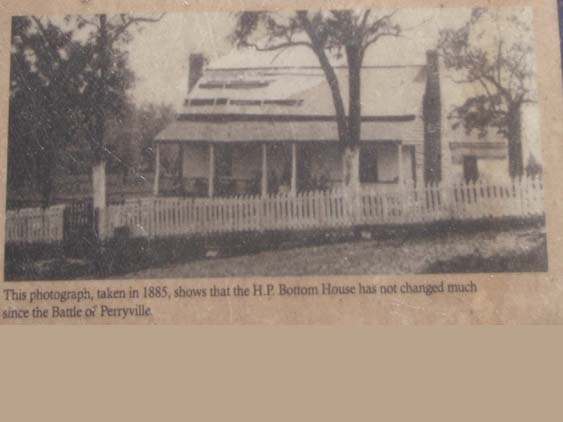
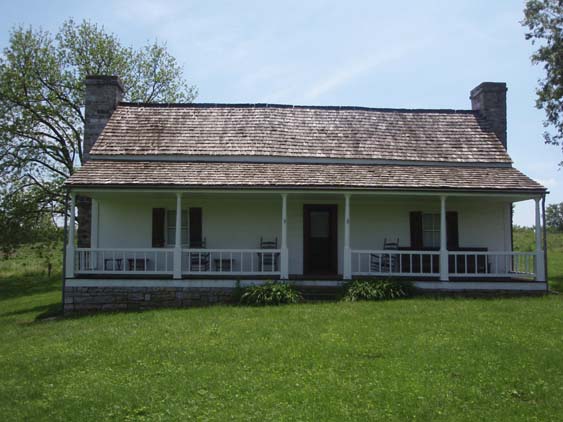
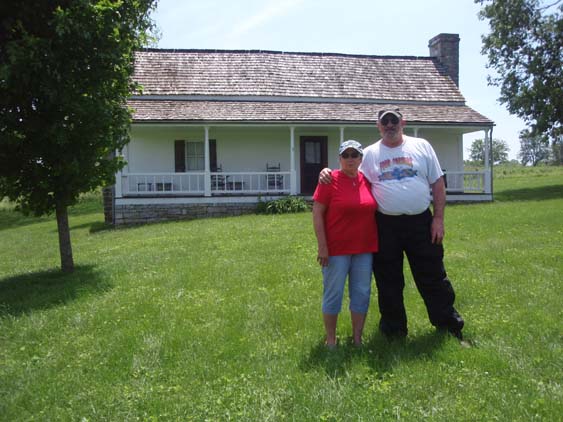
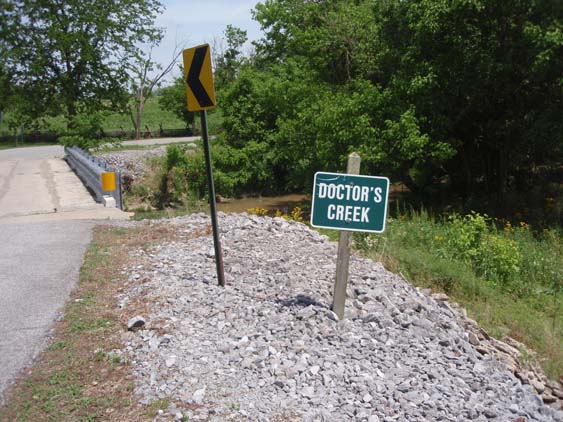
Since there is no restaurant in good walking distance of the motel, we swing into O'Charleys for supper. I have found their quality is usually pretty good and we are in no mood for a culinary adventure this late in the day. Our server is very good and we share with her why we are here which she finds very fascinating. Thinking about tomorrow, I ask her -
:"Anywhere around here you'd recommend for breakfast?"
She directs us to the Red Rooster Cafe right downtown, so we make a note and figure we will get the correct address when we get to the motel.

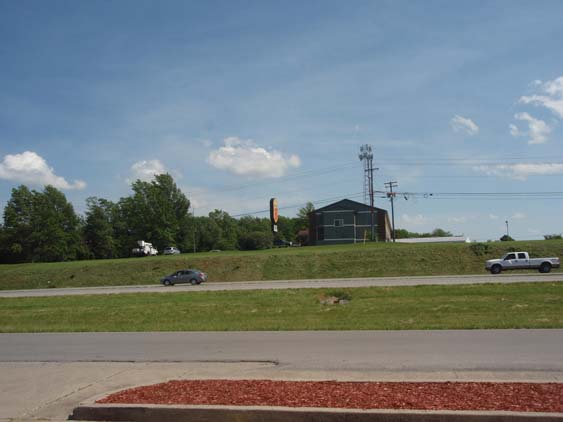
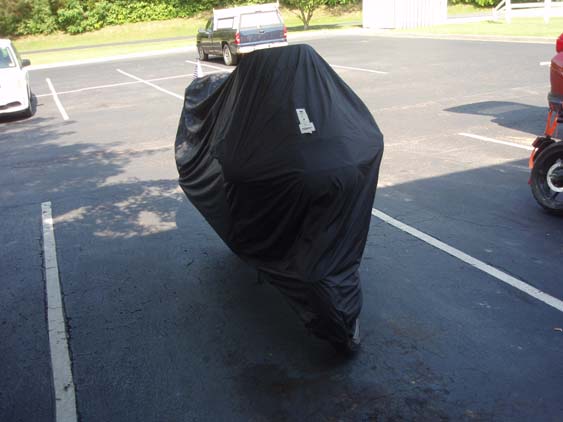
Sissy is having some trouble with her reservation here, so she's on her mobile trying to get it sorted. Pretty soon an ambulance and a fire truck show up on the premises. I stick my head out the window and holler at her -
"Well Sissy, I knew were having some trouble. But did you have send somebody to the hospital over it?"
She gives me her funny grin and we both laugh at that one. But she does get it sorted shortly with the motel.
